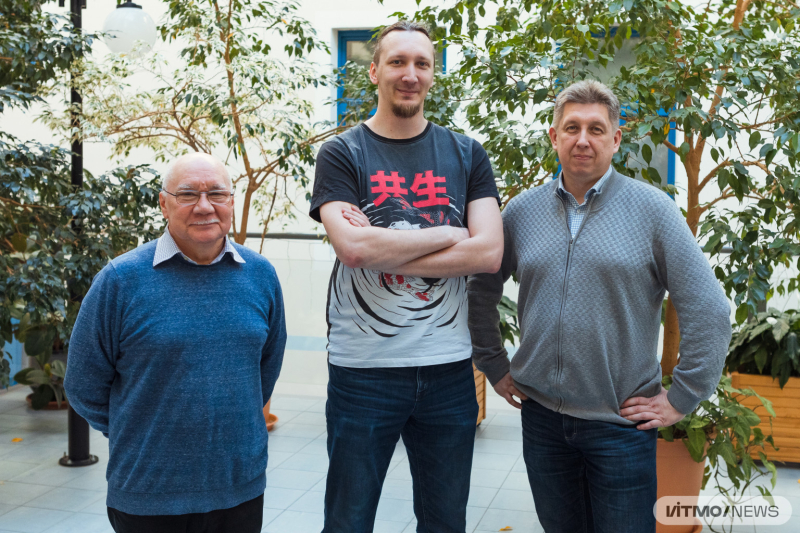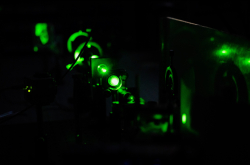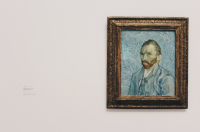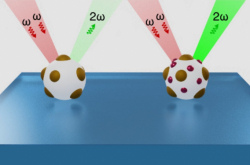What is an optical combiner and how does it work?
Modern augmented reality (AR) hardware, such as the Microsoft HoloLens headset, is based on special optical modules called combiners. Such devices are responsible for integrating virtual images into the user’s field of view. In HoloLens, this combiner is a waveguide with diffraction gratings for input and output.
A typical combiner is a light-conductive slab with diffraction gratings placed on its surfaces. To create a color image, several slabs and gratings set to different wavelengths are used. They are fabricated via either photolithography or holography. These processes require raw materials: photoresists and photopolymers. They are, however, far from perfect.
Modern photopolymers are used to make film with a thickness of about 4-8 micrometers. They are extremely sensitive to humidity and temperature changes, which lead to swelling, thus changing the optical parameters of the grating. This can disturb the images, either making them incomplete or changing the projection’s direction. Consequently, photopolymer-based devices can only be used in certain conditions (for example, the photopolymer BayFol is limited to temperatures below 60 degrees Celsius) and even then, they require protective coating.
Photoresist-based diffraction gratings also have some issues. They are vulnerable to dust, dirt, and physical and chemical impact, so a protective coating is required. Other downsides include being vulnerable to glare (letting light from foreign sources get past the grating and into the eye) and low diffraction efficiency (with rates as low as 1% for most devices), which makes the projected images very pale. Since it is impossible to calibrate such a grating to allow all three basic colors to pass through it at the same time, a single device needs to incorporate multiple precisely-positioned layers, making them a lot harder to manufacture.
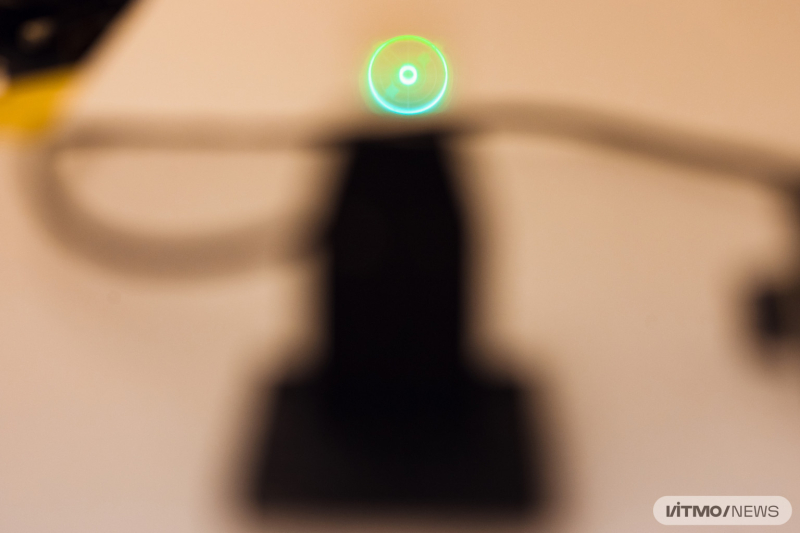
The device works by relaying an image from the projector to within the waveguide via a Bragg grating. The light then travels through the slab to the point of exit, where another Bragg grating transmits the image to the user’s eyes. Photo by Dmitry Grigoryev / ITMO.NEWS
The solution
A solution that ITMO scientists came up with utilizes a new approach to manufacturing combiners for AR devices. By using volume holography, they lowered the overall weight of the device (since it requires only one layer of waveguides), protected it from glare, and made the resulting image brighter by increasing diffraction efficiency.
A special photosensitive material – photothermorefractive glass that is used to create highly effective volume Bragg gratings – served as a basis for the combiner. Experts manufactured the glass into a slab that could have Bragg gratings inscribed within it. These gratings would then be used to create images.
Such combiners achieve durability without causing image distortion, since the slab that it is made of is a single solid piece of material. The slab functions as simultaneously a waveguide and a hologram without the need for additional coating. Unlike in photolithography, the hologram is located within the glass, not on top of it, which protects it from external impacts, even allowing it to work when the slab has sustained some damage. This makes it possible to use such devices even in extreme weather. Additionally, special properties of volume holograms based on photothermorefractive glass make them impervious to glare. The system managed to achieve a diffraction efficiency of 15%.
As per the developers, the photothermorefractive glass is durable, resistant to water, abrasion, high and low temperatures (it functions both when heated up to 200–500 degrees Celsius or cooled down to -30), and cannot be damaged by contaminants. Thanks to these properties, the device can be used in outdoor environments, including when it is raining.
Another advantage of this technology is that only one waveguide is required to produce color (RGB) images – unlike in photolithography, which requires multiple such slabs. Limitations like this lead to an increase in the weight of the device. To prevent this, slabs are made to be as thin as possible, which makes them less durable. The device from ITMO consists of just one slab, so it is simultaneously lighter and easier to produce than its counterparts.
The waveguide is compatible with all types of projectors because the holographic system that transmits the image from projector and back can be adapted to meet the requirements of any such devices. This means that the device can be used in both monochrome systems with fields of view in the range of single degrees (such as an indicator) and in full-color devices with fields of view of 30 degrees (for the purposes of advertising, entertainment, and in other fields).
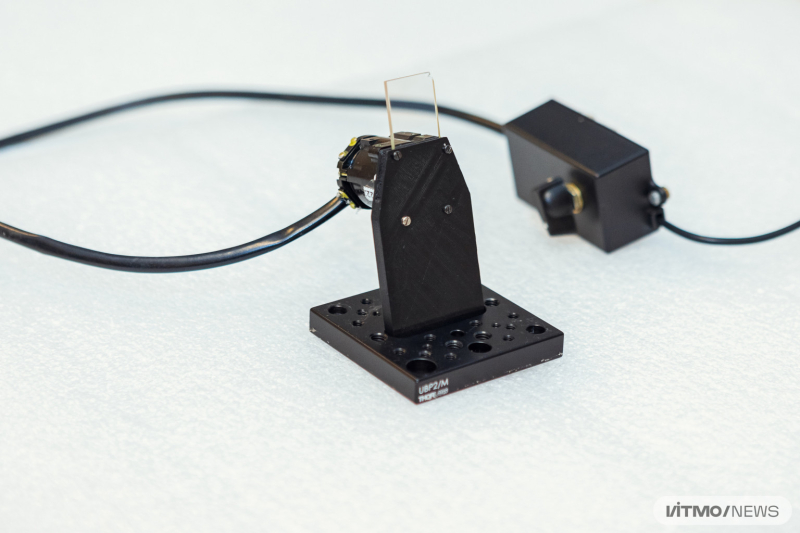
A mock-up model of an AR device that utilizes the combiner. The combiner consists of a slab, which serves as a waveguide, and volume Bragg gratings, which create the image. Photo by Dmitry Grigoryev / ITMO.NEWS
Future prospects
In the future, this technology could be used to produce various AR headsets, which may help automate industrial warehouses and production lines. Such headsets allow employees to perform complex tasks with minimal training by simply giving them hints via the device.
The waveguide could also be integrated into the windshields of cars and planes, serving as an extension of the dashboard. It would show useful information such as wind and vehicle speeds, or guide users along a map or a glide path.
“Next year, we plan to achieve full-color imaging by increasing the number of holograms while also widening the waveguide’s field of view. This would allow the waveguide to transmit larger images. In the future, we plan to upgrade this system from just serving as an indicator or virtual assistant into a fully fleshed-out AR environment for designing three-dimensional objects. Together with circuit designers and programmers we plan to build the hardware, displays, and all other components that would be used in conjunction with our optical module,” said Sergey Ivanov, an engineer at the Research Center of Light-Guided Photonics and member of the project team.

Sergey Ivanov. Photo by Dmitry Grigoryev / ITMO.NEWS
The project, which was brought to life at ITMO’s Research Center for Optical Material Engineering, is led by Nikolay Nikonorov, a professor at the Faculty of Photonics and Optical Information and head of the center. The project is also supported by the Priority 2030 program. The Research Center for Optical Material Engineering also trains students of the Master’s program Applied Photonics.
